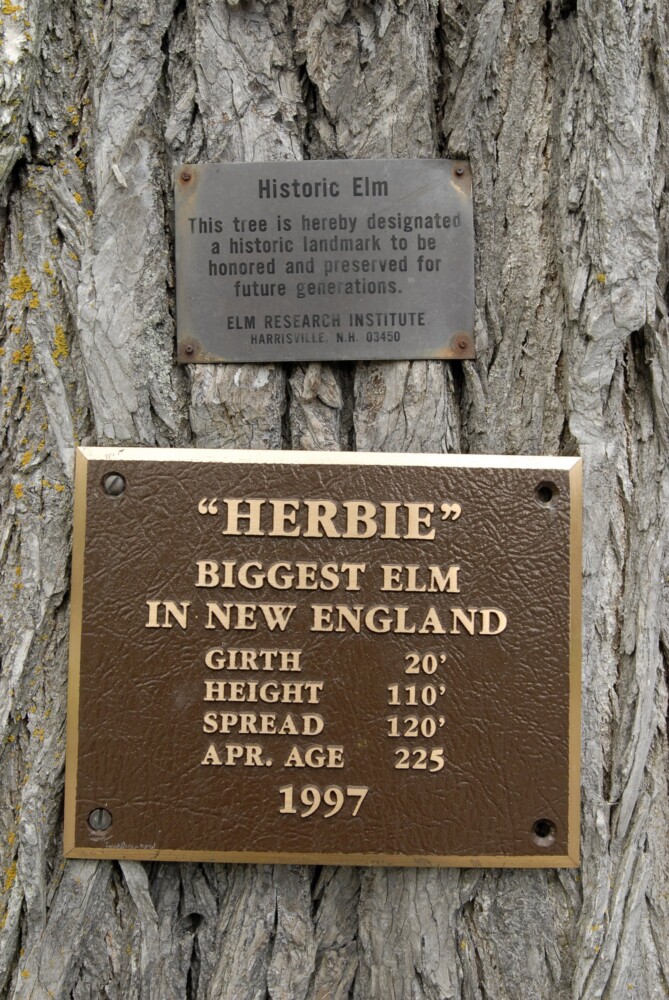Many people are sentimental and nostalgic. They miss things from their childhood and high school years: The big cars with tail fins, perhaps, or the guitar-driven, happy rock of Buddy Holly, Chuck Berry and Carl Perkins.
What John Hansel missed when he got home after World War II was elm trees. When he was growing up in Massachusetts, American elms lined many streets. Taller than other deciduous hardwoods such as oaks and maples, the towering elms created majestic canopies that turned streets all over the country into living cathedrals.
Beginning in about 1945, the trees were being infected by Dutch elm disease, a fungus spread by beetles. Once infected, the elms soon died.
Hansel was shocked by what the federal government was doing in an effort – futile as it turned out – to save the trees. The favored method at that time, Hansel said, was to cut down all the healthy elms near the diseased trees and burn all the wood in an effort to kill both the fungus and the beetles. The idea was to create a buffer, so the disease would not spread to healthier populations miles away.
It failed.
“I came home from World War II and found chainsaws running wild,” Hansel recalled. “We had on our property a dozen elms in the Herbie-size class, very large beautiful trees.”
The trees contracted the disease and were cut down.
Hansel dedicated the rest of his life to protecting elms, establishing the nonprofit Elm Research Institute in Keene, New Hampshire, and the Liberty Tree Society, a program of the institute. The society has just begun selling clones of Herbie, the beloved, giant elm that grew in Yarmouth for some 200 years until it lost its valiant battle against the disease.
Hansel, now a Keene resident, looked for a cure for Dutch elm disease, helping researchers at universities, including the University of Maine and Cornell. He has no training as an arborist. He describes himself as a passionate amateur “determined to do anything I could to celebrate and if possible preserve America’s most beautiful shade tree.”
He also appreciates the trees for their role in the formation of the United States. As he put it, “The Liberty Tree under whose branches, as John Adams said, the revolution began in 1775.”
Hansel and others also searched for disease-resistant elms, and the Liberty Tree Society began selling cuttings from such trees. The first Liberty Elms came from west of the Mississippi River and were grown in Wisconsin. For two decades, the society sold the trees, 90 percent of which are still alive. But Hansel and his colleagues dreamed of repopulating the country with the larger Eastern elm, so beginning in 2000, when Herbie was near death, they began taking Herbie clones.
Getting clones from a tree can be an iffy procedure in the best of times. You cut a small branch off a tree, put it in water and hope it puts out roots. If it does, you attempt to transplant it into potting soil. With an old, sick tree, the odds of creating successful clones go down. Once you get one good clone, though, it’s easier to create more.
“We took over 5,000 cuttings and we got just one to grow,” Hansel said in a telephone interview this month. “It was just dumb luck that we got one to survive. No one else got one.”
Why, other than nostalgia, are the elms worth all this effort when we have native oaks, maples, hickories and other deciduous trees that don’t suffer from such a disease?
“The elm is the only tree whose canopy will rise above the power lines,” Hansel said. “If you trim it for the first 10 or 15 years, for 100 years or more of the rest of its life the canopy will spread above the lines.”
Again, setting aside nostalgia, why is a Herbie clone better than the Princeton elms – also resistant to Dutch elm disease – that are sold by local nurseries?
“With those they never identify the parent,” Hansel replied. “They say it comes from Princeton, but not which tree. With ours, you know which tree it came from. You can go to Yarmouth and see the stump. You can count the rings if you want to.”
The Herbie clones are all grown in containers, so they won’t suffer transplant shock from being dug out of a field. They also weigh less than 50 pounds, meaning they are light enough for one person to plant them. Each tree comes with a small brass plaque attesting that it is a Herbie clone.
I had one last question for Hansel. He has been involved in efforts to save American elms for more than half a century and is still very active. But he’s 95 years old (young for an elm tree, not so young for a human). Will the society continue if he can’t run it?
“That is all set,” he said. “I have four sons and a daughter, all interested in elms. Liberty Tree is secure.” Hansel’s children all live near the Keene nursery where the trees are grown.
It’s good to know the work will continue.
Tom Atwell is a freelance writer gardening in Cape Elizabeth. He can be contacted at: tomatwell@me.com.
Comments are not available on this story.
Send questions/comments to the editors.


